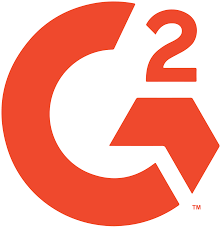In today’s fast-paced business environment, effective project management is more crucial than ever. Central to this discipline is the practice of conducting comprehensive project performance reviews, which serve not only as a measure of success but also as a vital tool for continuous improvement and strategic planning. This article, “,” aims to demystify the review process, providing professionals with a structured approach to evaluating project outcomes against established goals and benchmarks. By adopting a systematic method, organizations can harness valuable insights, foster accountability among team members, and enhance decision-making capabilities. Whether you’re a seasoned project manager or new to the field, this guide will equip you with the essential skills and knowledge to conduct impactful reviews that lead to sustained project success and greater organizational effectiveness. Dive in as we outline key strategies, best practices, and practical tips to elevate your project performance reviews to the next level.
Table of Contents
- Understanding the Importance of Project Performance Reviews
- Establishing Clear Evaluation Criteria and Metrics
- Conducting Effective Review Meetings and Gathering Feedback
- Implementing Insights for Continuous Improvement and Future Success
- Wrapping Up
Understanding the Importance of Project Performance Reviews
Evaluating project performance is crucial for any organization that aims to optimize its resource allocation and improve overall effectiveness. Regular reviews allow teams to identify strengths and weaknesses in their processes, ensuring that projects stay aligned with their original objectives. This practice not only fosters a culture of accountability but also encourages proactive problem-solving. Key benefits of conducting comprehensive performance reviews include:
- Enhanced Communication: Frequent reviews promote open dialogue among team members, fostering a collaborative environment.
- Data-Driven Decisions: Performance metrics provide insights that enable informed decision-making.
- Continuous Improvement: Iterative evaluations allow for adjustments that can lead to increased productivity and efficiency.
Furthermore, understanding the nuances of project performance can significantly impact an organization’s bottom line. By systematically analyzing performance data, executives can quickly pivot strategies that aren’t yielding results, reallocating resources where they will have the most effect. Establishing a structured review process helps create a feedback loop which ensures lessons learned are integrated into future projects. Consider the following elements when conducting reviews:
| Element | Description |
|---|---|
| Scope Assessment | Evaluate whether project objectives were achieved. |
| Time Tracking | Analyze if deadlines were met and identify delays. |
| Budget Review | Check for adherence to budget and unexpected expenses. |
| Stakeholder Feedback | Collect insights from all involved parties to gauge satisfaction. |
Establishing Clear Evaluation Criteria and Metrics
Establishing effective evaluation criteria and metrics is essential for gauging project performance accurately. By defining specific benchmarks and standards, you create a framework that helps assess progress, identify areas for improvement, and celebrate successes. These criteria should be aligned with project objectives and encompass various dimensions, including timelines, quality of deliverables, budget adherence, and stakeholder satisfaction. A clear overview of evaluation metrics will streamline the review process by providing a consistent measurement approach.
It’s beneficial to categorize your criteria into key areas to ensure a comprehensive evaluation. Consider using a table to organize these areas and their respective metrics:
| Evaluation Area | Metrics |
|---|---|
| Timeliness | % of milestones met on time |
| Quality of Deliverables | Number of revisions required |
| Budget Management | % variance from budget |
| Stakeholder Satisfaction | Feedback ratings on a scale of 1-10 |
This structured approach not only enhances clarity and accountability but also fosters transparent communication among team members and stakeholders. Regularly revisiting and adjusting these criteria based on project dynamics will ensure they remain relevant and effective, ultimately driving better project outcomes.
Conducting Effective Review Meetings and Gathering Feedback
To ensure that project performance reviews are both effective and collaborative, it’s important to establish a clear agenda ahead of time. This will allow all participants to prepare adequately, resulting in more focused discussions. Consider including the following key components in your agenda:
- Review of Objectives: Start by revisiting the project goals to align everyone’s understanding.
- Performance Metrics: Discuss the specific metrics that indicate project success.
- Challenges and Solutions: Identify obstacles faced during the project and explore potential solutions as a team.
- Resource Allocation: Evaluate whether resources were effectively utilized throughout the project.
Gathering feedback is crucial for continuous improvement and should happen in a structured yet open manner. Consider using a feedback matrix to collect insights efficiently. This can facilitate a productive conversation and encourage participation from all members:
| Category | Positive Feedback | Areas for Improvement |
|---|---|---|
| Communication | Clear updates shared regularly | More frequent check-ins needed |
| Collaboration | Strong team synergy | More cross-departmental involvement |
| Execution | Timely completion of milestones | Ensure clearer work scopes |
Implementing Insights for Continuous Improvement and Future Success
To truly capitalize on the findings from project performance reviews, organizations must establish a robust framework for implementing insights into actionable strategies. This process involves engaging stakeholders at all levels to ensure that lessons learned translate into measurable outcomes. Key steps include:
- Analyzing Data: Review quantitative and qualitative metrics to gauge performance trends.
- Setting Clear Objectives: Align insights with organizational goals to prioritize actions.
- Developing Action Plans: Create detailed plans with timelines and assigned responsibilities for each identified improvement.
Furthermore, fostering a culture of continuous improvement requires regularly revisiting these insights to determine their impact. By establishing a routine feedback loop, organizations can adjust strategies in real-time, enhancing overall effectiveness. Consider utilizing the following table to track progress over time:
| Improvement Area | Initial Metric | Current Metric | Change (%) |
|---|---|---|---|
| Project Delivery Time | 30 days | 25 days | 16.67% |
| Client Satisfaction | 75% | 85% | 13.33% |
| Budget Variance | $10,000 | $7,500 | 25% |
Wrapping Up
mastering project performance reviews is not just a procedural necessity; it is an essential practice that can significantly enhance project outcomes and foster a culture of continuous improvement within your organization. By following the step-by-step guide outlined in this article, you can establish a robust framework for evaluation that aligns with your strategic goals, encourages open communication, and drives accountability among team members.
As you implement these strategies, remember that successful performance reviews are not a one-time event but an ongoing process that requires regular reflection and adaptation. Embrace feedback as a valuable tool for growth, not only for individual contributors but also for your project management processes as a whole.
By committing to excellence in project performance reviews, you position your organization to respond effectively to challenges, leverage successes, and ultimately deliver value to all stakeholders involved. Take the initiative today to refine your approach and elevate your project management practices. The road to mastery is continuous—start the journey now.






